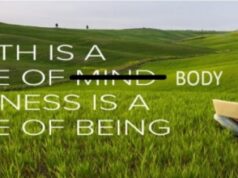Australia facing worst economic growth in at least a decade as June quarter results loom

2019 has seen big declines in the volatile stock market, with tensions rising globally on the back of the trade war.
The Government is bracing for bad news tomorrow, with the Australian economy on the cusp of slumping to its lowest rate of growth in almost two decades.
The results of the June quarter will be announced tomorrow. Prime Minister Scott Morrison says he expects the figures to reflect a “very difficult” quarter, and Treasurer Josh Frydenberg admits he is expecting “soft” economic growth.
“I suspect the June quarter results will be soft, but what matters is the plan that is already in place to address that, both now and into the future,” Mr Morrison confirmed yesterday.
Economists’ forecasts are centring on a 0.5 per cent increase in gross domestic product (GDP), which would bring the annual rate through to June 30 down to 1.4 per cent.
That would be lower than the 1.7 per cent growth recorded during the 2008-09 global financial crisis, and the lowest rate since the Dotcom bubble burst in 2000.
Data from the Australian Bureau of Statistics, released yesterday, showed businesses had increased spending on wages by 4.7 per cent in the past year and operating profits had risen sharply for mining companies — both positive indicators.
But the data also showed a huge 0.9 per cent drop in inventories, fuelling fears the economy may have even contracted during the June quarter. Two consecutive quarters of negative growth would constitute a recession.
The Coalition made economic management the core rationale of its election campaign in May. Mr Frydenberg is pre-emptively blaming tomorrow’s weak figures on the disruption caused by that campaign, as well as natural disasters at home and the escalating trade war between China and the United States.
Stephen Koukoulas
✔
@TheKouk
Conundrum for today
Is annual GDP growth is 1.5% or so, and employment growth is 2.5% or so, something is horribly wrong with the Australian economy.
“With the election falling in the middle of the June quarter and the ongoing impact of trade tensions abroad and devastating floods and drought at home, we are expecting soft June quarter results on Wednesday,” Mr Frydenberg told The Australian Financial Review.
“With last year’s June quarter growth of 0.9 per cent coming out, the market has been clear that the GDP-growth-through-the-year number will be lower than its current rate of 1.8 per cent.”
Mr Frydenberg called for calm, saying the economic boost from the Government’s income tax cuts, which came into effect on July 1, would not be shown in the June figures, nor would the Reserve Bank’s decision to cut interest rates a second time in July.
“This is not an easy time for economies the world over with Germany, the UK and Singapore among others recording negative growth in the June quarter,” the Treasurer said.
“However the fundamentals of the Australian economy are strong, we have maintained our AAA credit rating, employment growth is more than twice the OECD average and the budget is coming back to surplus for the first time in more than a decade.”
Labor does not share his optimism.
“When it comes to blame-shifting and finger-pointing, these latest excuses for economic mismanagement are a new low even for the Liberals,” shadow treasurer Jim Chalmers said this morning.
“Today’s comments from the Treasurer show that after six years, and in the Liberals’ third term, they want Australians to believe the slowing economy is somehow everybody else’s fault.
“It’s not good enough for Scott Morrison to dismiss the domestic economy’s longstanding homegrown weaknesses as a ‘difficult quarter’.
“On his watch, Australia has the slowest growth in a decade, stagnant wages, productivity in decline, record household debt, high underemployment and declining living standards, and all he’s promising is more of the same.”
Mr Chalmers called on the Government to bring forward its Mid-Year Economic and Fiscal Outlook from December and outline new policies to stimulate the economy.
The Government would argue its tax cuts, the RBA’s rate cuts and a large program of infrastructure spending already satisfy the need for stimulus.
In his comments yesterday, the Prime Minister said he always expected the June quarter to be difficult. Nevertheless, if tomorrow’s figures are as weak as expected, they will defy forecasts from both Treasury and the Reserve Bank.
The RBA is predicting growth of 0.8 per cent in the June quarter, which would mean an annual rate of 1.7.
Its board is meeting today to decide whether to cut interest rates again. The cash rate is already at a record low of 1 per cent, and experts do not expect that to change today, but they do think it will be cut to 0.75 per cent before the end of the year.
Governor Philip Lowe appeared before parliament’s Economics Committee in Canberra earlier this month, and issued a veiled message to the Government to do more.
Dr Lowe pushed the Government to consider two possible methods to stimulate the economy — either more infrastructure spending, or structural policy changes.
“One option is for fiscal support, including through spending on infrastructure,” Dr Lowe said.
“Spending on infrastructure not only adds to demand in the economy but, done properly, it can boost the economy’s productivity. It can also directly improve the quality of people’s lives through reducing congestion and improving services.
“At the moment, there are some capacity constraints in parts of the infrastructure sector, but these should not prevent us from looking for further opportunities to boost the economy’s productive capacity and support domestic demand.
“There is no shortage of finance to do this, with interest rates the lowest they have ever been. This week, all governments in Australia can borrow for 10 years at less than 2 per cent.”
The other, structural approach would involve policy changes to support firms expanding, innovating and employing more people.
“It’s very much linked to the issue of productivity. What do we do to lift productivity growth in this country?” Dr Lowe said.
Productivity growth has dropped off sharply in recent years. Dr Lowe nominated a number of policy areas where improvements could be made, including the way land is taxed, the incentives for innovation and entrepreneurship in the tax system, competition policy, skills and education, and the use of data by government to drive better delivery of services.
“There’s no shortage of ideas across those various areas,” he said.
The Federal Budget delivered in April, before the election, forecast GDP growth picking up to 2.75 per cent in 2019-20, and Mr Frydenberg promised to create 1.25 million new jobs over the next five years.
“Our economic plan is working,” he declared.
“The fundamentals of the Australian economy are sound, but there are genuine and clear risks emerging both at home and abroad.
“The residential housing market has cooled, credit growth has eased and we are yet to see the full impact of flood and drought on the economy.
“Global trade tensions remain, the Chinese economy has slowed and there has been a loss of momentum in Japan, Europe and other advanced economies.
“Notwithstanding these challenges, it is a testament to the strength of the Australian economy that it is in its 28th year of consecutive economic growth. Our economic plan will see this continue.”



